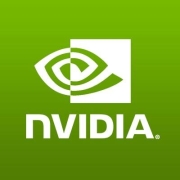Server Virtualization Software provides a way to partition physical servers into multiple virtual ones, optimizing resource use and reducing costs. It enhances flexibility and scalability in IT environments.
Server Virtualization Software is crucial for organizations seeking to maximize their hardware resources while maintaining efficiency. Allowing multiple operating systems to run independently on the same physical machine, it streamlines processes and can significantly reduce overhead costs. Organizations benefit from improved resource allocation and management, ensuring that workloads are executed efficiently without the need for additional hardware investments. Real user insights indicate that effective server virtualization leads to increased uptime and operational agility.
What are critical features of Server Virtualization Software?In industries like healthcare, finance, and telecommunications, Server Virtualization Software plays a significant role in supporting complex, mission-critical applications with high reliability. These industries often require stringent uptime and data security measures, making virtualization a practical choice for maintaining high service levels.
Server Virtualization Software helps organizations optimize their IT infrastructure by running multiple virtual servers on a single physical machine. This reduces the need for physical units, leading to cost savings and improved resource management.






























Server virtualization software is a software whose architecture is designed to support more than one server operating system to act as a guest on a physical server host. The software becomes a virtual machine when the software is abstracted away from its physical machine and in this way the server technically believes it is running exclusively on the memory resources. Server virtualization software allows for a more efficient use of IT resources.
Server Virtualization Software enhances resource utilization by allowing multiple virtual machines (VMs) to run on a single physical server. This approach maximizes hardware efficiency and ensures that resources are allocated dynamically based on current workloads, reducing idle time and lowering energy consumption. You can optimize performance and save costs by consolidating servers.
What are the security benefits of using Server Virtualization Software?Virtualization offers enhanced security by isolating each VM, preventing attacks from spreading across systems. You can implement strict access controls and use snapshot features to quickly revert to previous states in the event of security breaches. Regular VM maintenance and updates are crucial for maintaining security integrity.
How does Server Virtualization Software aid in disaster recovery?Server Virtualization Software simplifies disaster recovery by enabling quick backups and migrations. You can utilize features like live migration and failover clustering to ensure system continuity. By replicating VMs to offsite locations, you dramatically reduce downtime in case of hardware failures or other disruptions.
Can Server Virtualization Software facilitate cloud integration?Virtualization provides a seamless bridge to cloud environments. It's common to use virtualized systems as part of hybrid cloud strategies, allowing you to easily migrate workloads between on-premises datacenters and cloud providers. This flexibility supports scalable and cost-effective infrastructure management.
What are the cost-saving advantages of deploying Server Virtualization Software?Server Virtualization Software significantly lowers operational costs by reducing the need for physical hardware, minimizing space, and decreasing power usage. Licensing costs are also reduced, given fewer physical servers. You're enabled to make more strategic investments in IT initiatives rather than hardware purchases.